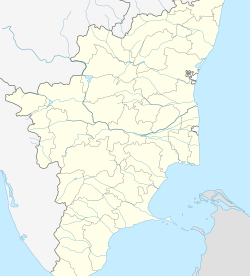It has a relatively small proportion of its net sown area unirrigated, indicating poor irrigation demand. The average monthly per capita expenditure of rural agricultural households is relatively high for the district, suggesting higher purchasing capacity of the farmers here. The district has a relatively high penetration of banks in rural and semi-rural areas, facilitating higher access to institutional credit for farmers. There is a comparatively high level of farm mechanization in the district, implying a positive outlook towards progressive technologies amongst the farmers. The district has a relatively high proportion of small and marginal farmers. The district appears in the group of districts, which show (very) low vulnerability towards climate change, as per an index constructed by CRIDA.
Deployment Approaches
| Approaches | Feasibility |
|---|---|
| Individually owned off-grid solar pumps | Limited Suitability |
| Solarisation of feeders | Limited Suitability |
| Solar based water as a service | Not Suitable |
| Promote 1 HP and sub-HP pumps | Limited Suitability |
| Solarisation of individual grid-connected pumps | Limited suitability |
Individually owned off-grid solar pumps
Limited Suitability
The district has high crop revenue per holding, and a high concentration of diesel pump users. But, disbursement of institutional credit is low and ground water availability is below the safe limit, making it very difficult to promote the private ownership of solar pumps here.
| Parameter | Value | Percentile |
|---|---|---|
| Number of cultivators reporting use of diesel pumps | 22,718 | 57 |
| Water Availability Index | 0.44 | 33 |
| Crop revenue per holding (INR) | 86,657 | 52 |
| Medium and long term institutional credit disbursed in a year (in INR Crore) | 92.2 | 67 |
Solarisation of feeders
Limited Suitability
The district has a relatively high penetration of electric pumps, and its DISCOM incurs a high cost for supplying power, but the district has a comparatively low extent of feeder segregation. Solarisation of the feeders will only be possible once the district separates agricultural feeders from the rest.
| Parameter | Value | Percentile |
|---|---|---|
| Actual cost of power supply (INR/kWh) | 6.69 | 84 |
| Extent of feeder segregation | 0% | 0 |
| Proportion of cultivators reporting use of electric pumps | 89% | 99 |
Solar based water as a service
Not Suitable
The concentration of small and marginal farmers is rather high in the district, but groundwater availability is below the safe limit. In addition, a relatively low proportion of unirrigated area makes it very difficult to promote solar-based irrigation through the water-as-a-service model here, unless it undercuts the price of water from existing sources, and improves water utilisation through promotion of micro-irrigation.
| Parameter | Value | Percentile |
|---|---|---|
| Water Availability Index | 0.44 | 33 |
| Proportion of small and marginal cultivators | 95% | 80 |
| Unirrigated net sown area as a share of total net sown area | 9% | 12 |
Promote 1 HP and sub-HP pumps
Limited Suitability
The district has a relatively high proportion of gross cropped area under horticulture crops, a high concentration of marginal farmers and a comparatively high disbursement of institutional credit to marginal farmers, but groundwater availability is below the safe limit. Water conservation and efficient irrigation practices (such as drip irrigation) should be promoted to improve the viability of small capacity pumps.
| Parameter | Value | Percentile |
|---|---|---|
| Area under horticulture crops as a share of gross cropped area | 11% | 64 |
| Water Availability Index | 0.44 | 33 |
| Proportion of marginal cultivators | 84% | 83 |
| Medium and long term institutional credit disbursed in a year (in INR Crore) | 92.2 | 67 |
Solarisation of individual grid-connected pumps
Limited suitability
The district has a relatively high penetration of electric pumps and power supply to its agriculture consumers is heavily subsidised. But the district has a comparatively low extent of feeder segregation and its groundwater availability is below the safe limits. Solarisation of individual grid-connected pumps will only be possible once the district separates agricultural feeders from the rest. Further the approach should be taken up with extreme caution as it may aggrevate the groundwater depletion.
| Parameter | Value | Percentile |
|---|---|---|
| Water Availability Index | 0.44 | 33 |
| Actual cost of power supply (INR/kWh) | 6.69 | 84 |
| Extent of feeder segregation | 0% | 0 |
Leveraging Solar Pumps to Promote Policy Objectives
If you are deploying solar pumps in this district then you can further these policy objectives.
National Mission on Oilseeds and Oil Palm (NMOOP)
The relatively low share of oilseeds and oil palm crops under gross sown area in the district makes it a suitable candidate for promoting NMOOP. Solar pumps could meet irrigation needs for these crops and help farmers diversify their yields beyond cereals.
| Parameter | Value | Percentile |
|---|---|---|
| Area under oilseeds as a share of total cropped area | 51 |


